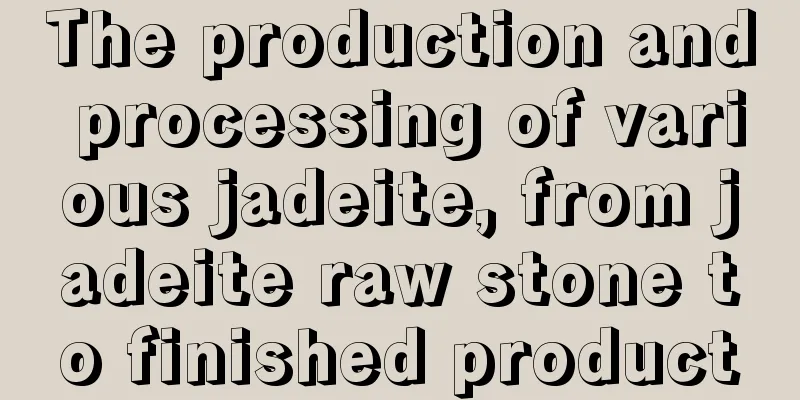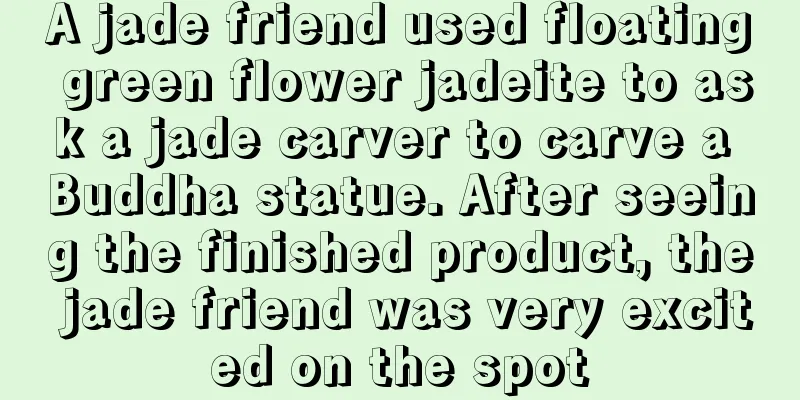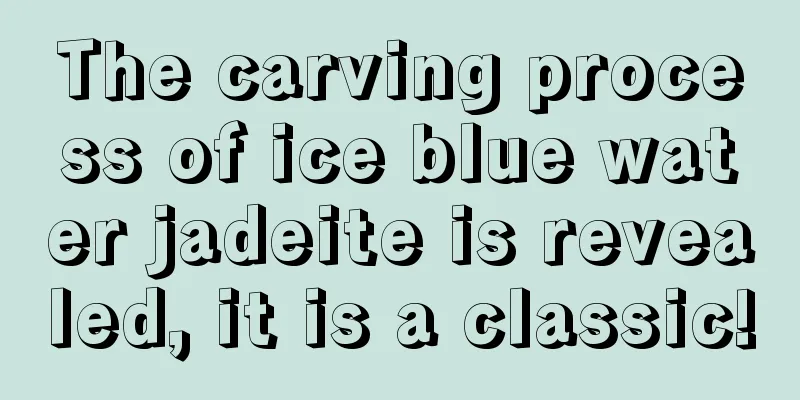Let’s take a look at the methods commonly used to identify the authenticity of jadeite. Which one have you used?

|
How to identify the authenticity of jadeite is something that many consumers have always wanted to learn. There are also many methods circulating among the people. Everyone hopes that there is a method that can help them tell the authenticity of jadeite at a glance. As a result, various identification methods began to circulate among the people, but can these methods really identify the authenticity of jade? Myth 1: Jade that feels cooler is real jade Many people in the community will tell you that if it is real jade, it will feel cool when you put it in your hand because jade has thermal conductivity. In fact, this is only somewhat useful for plastic glass, but for impersonating B-grade or C-grade jadeite, this method is totally unreliable. There is one more thing you must pay attention to! The feeling of coldness is just our sense of touch, which will change with the change of human hand temperature. Therefore, it is not sufficient to use coldness as the only basis for identification. Myth 2: If the hair is wrapped and burns continuously, it means it is real jadeite This is the method I hear most often. Many jade friends who have just accepted jade often ask me whether this method is reliable. The most widely circulated, magical and absurd statement among the people is that you wrap a strand of hair around jade and burn it with a lighter. If it burns off immediately, it is fake, and if it does not burn off, it is real. In fact, fire has inner flame and outer flame. The outer flame has a higher temperature. In addition, there is a big difference between loose and tight wrapping of hair. I know that someone will argue that jade has good thermal conductivity, so this method is scientific enough. But don’t forget, no matter how good the thermal conductivity of jade is, it cannot prevent the temperature of the external flame from burning your hair. If you don’t believe it, you can try it. Myth 3: Drip method There is a folk saying that if you drop a drop of water on jade, if it appears as round beads, then that is real jade. This is a phenomenon caused by the tension on the smooth surface of jade. It was possible to try it in the past, but in recent years the production technology of B-grade jade has become much more advanced. B-grade jade will undergo a second polishing, and the fakes that have been treated in this way will have acid-etched reticulation and acid-etched pits on the surface that cannot be seen even under a ten-fold magnifying glass, so the dripping method is no longer feasible now. Myth 4: Jade that can scratch glass is real jade Many merchants will tell consumers that jade is very hard and can scratch glass, otherwise it is fake! Let's analyze this. Glass is quartz. The Mohs hardness of quartz is 7, while the hardness of jade is 6.5-7. Glass is cryptocrystalline and has the same hardness in every direction. Jade is polycrystalline and its cleavage surface has different hardness, so jade may be damaged to a certain extent when it rubs against glass. And don’t forget that many quartz jades or other gems with higher hardness can scratch glass, so this is not a basis for identification. Myth 5: Jadeite with a crisp sound when knocked is real jadeite Using the sound of knocking jade to judge its authenticity sounds quite reliable. This is because the denser the crystal particles of jade, the more affected the propagation of sound waves when it is knocked. The smaller the sound waves, the crisper the sound. However, because B-grade jade has been acid-washed, its fiber structure is destroyed and becomes loose, so the sound it makes when knocked will be relatively dull. In fact, with the development and progress of counterfeiting technology, this method is no longer so scientific and reliable. The fillings of B-grade products are now also crisp after improvement. In addition, the knocking sound is actually related to the stone pattern. The knocking sound of A-grade jadeite with stone patterns will also be dull. Moreover, this method is not feasible for small beads, ring faces, inlays, etc. fcgc66 fcpf18 |
<<: Jade Guanyin, Buddha...Experts reveal why jade carvings are always in the same old style?
>>: Master these jade identification tips, and you can turn from a novice into an expert in seconds!
Recommend
Is “plain” jade better or “carved” jade better? When buying jade, you should consider these two points, remember!
Everyone knows that the beauty of jade lies in it...
The exquisite colors and clever carvings emphasize the perfect combination of "color" and "art"!
Polishing a rough jade will reveal a beautiful ja...
How to identify C-grade jadeite whose color cannot be changed but quality?
If you want to identify C-grade jadeite, you must...
Regardless of the era, jade can be perfectly controlled
Since jade was introduced into my country, its st...
Each jade pendant represents a beautiful meaning. Do you know all these meanings?
The beautiful jade of a jade lover must carry the...
Jade carving, fun is the driving force of creation
Jade has a long history. Over the long years, our...
What is the investment prospect of jadeite? A Brief Analysis of the Trend of Jade Market
In recent years, the vigorous development of the ...
Dislike the ugly ancient jade! Do you know how hard it is to make them?
Jade is the essence of mountains, rivers and land...
Why is Jadeite valuable for investment?
95% of the gem-grade jade produced in the world c...
Jade must have meaning, and the meaning must be auspicious - among the various styles of jade, which one is most suitable for you?
Jade represents a culture in China. Jade culture ...
Let’s analyze the value of jadeite together! Is investing in jadeite feasible?
The ancients believed that jade was a stone from ...
Burmese jade, the ultimate beauty of jade!
Since ancient times, jade has been regarded as th...
What kind of jade is good jade? Let's take a look at the quality rating of jadeite~
There are so many types of jade that many people ...
Jade Appreciation | Jadeite·Flower Shadow
Yesterday, the Waking of Insects, There are three...
“Wear two bracelets for wealth and honor” or “Don’t wear two jade bracelets at once”, which one should you listen to?
We all know that bracelets are the most material-...









